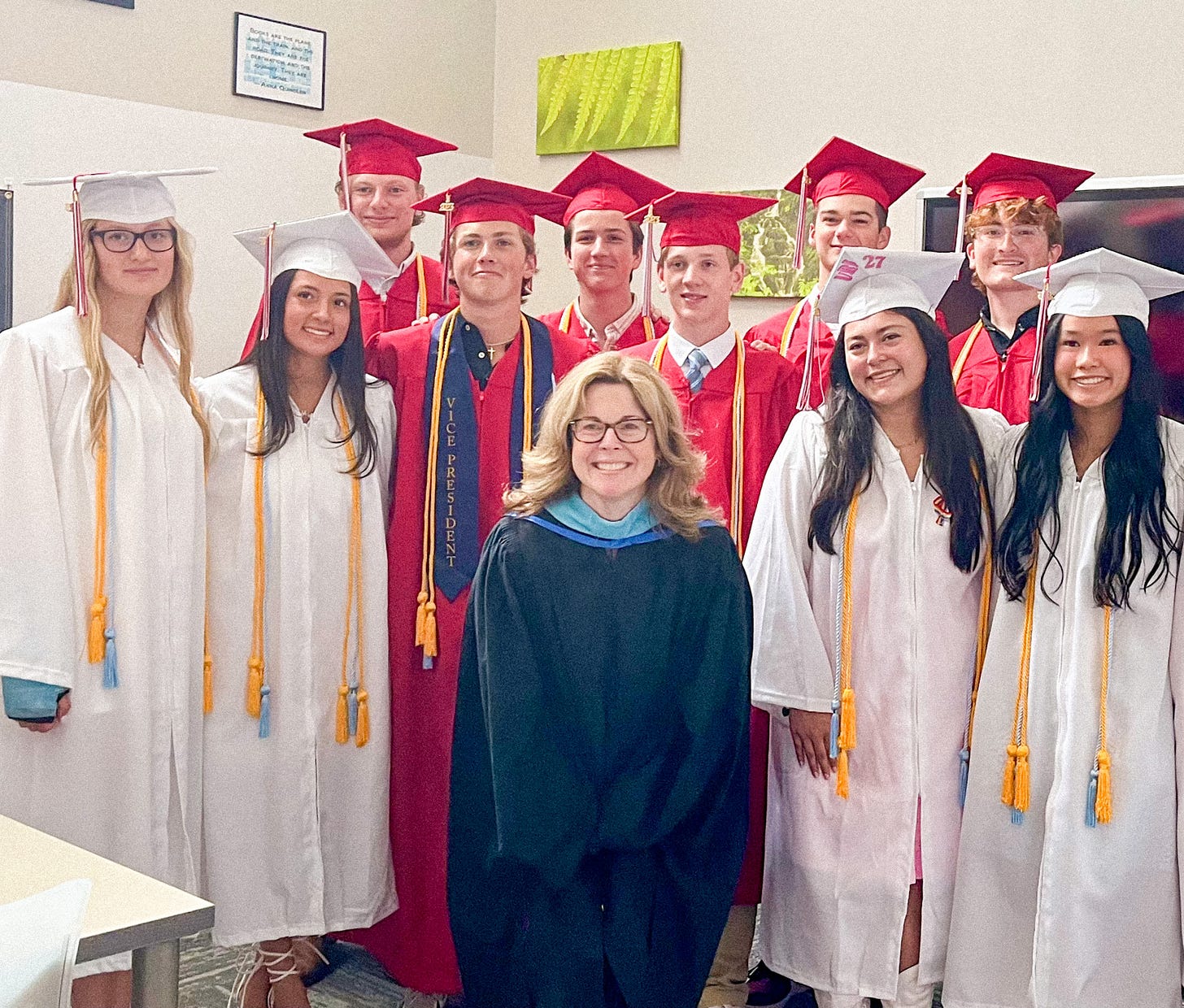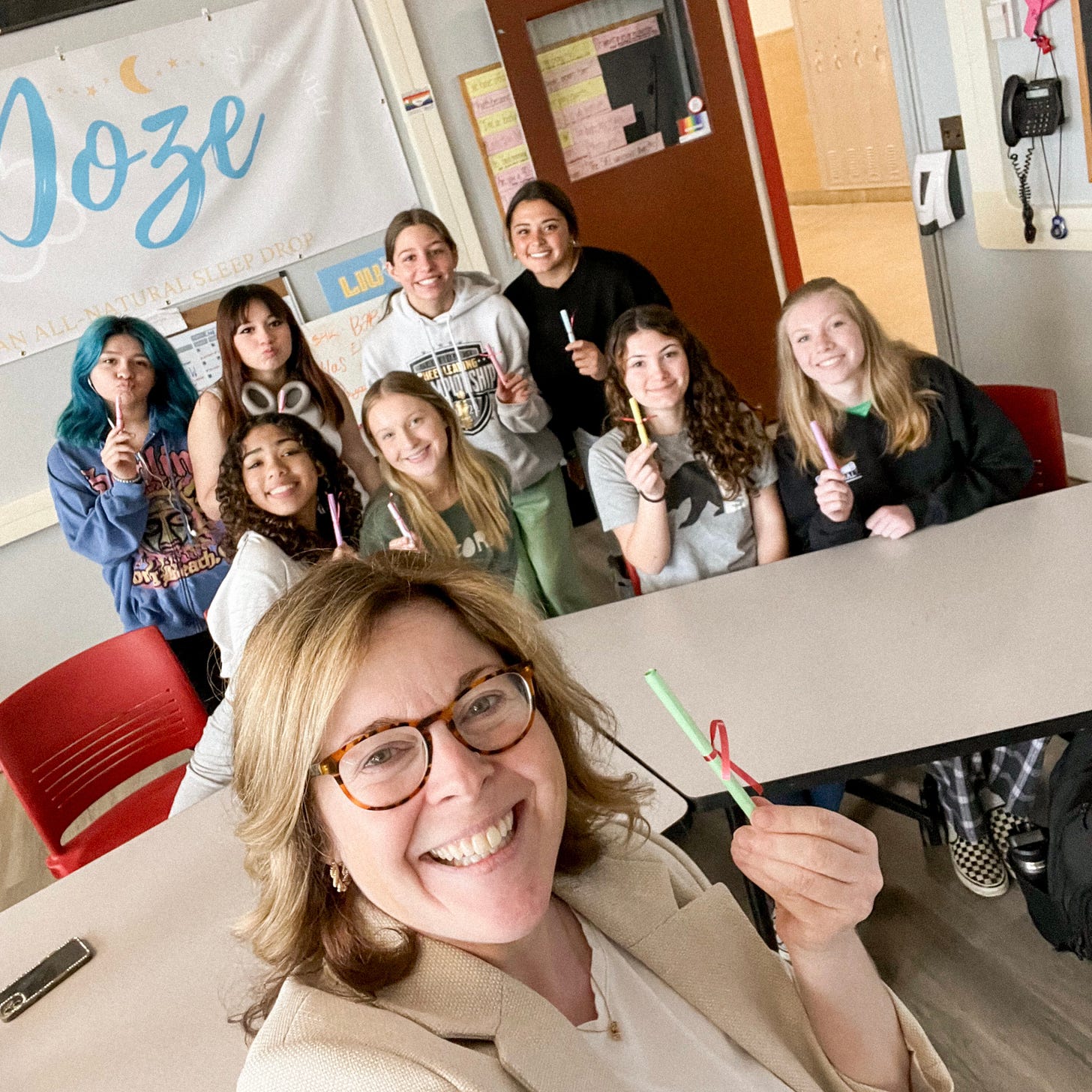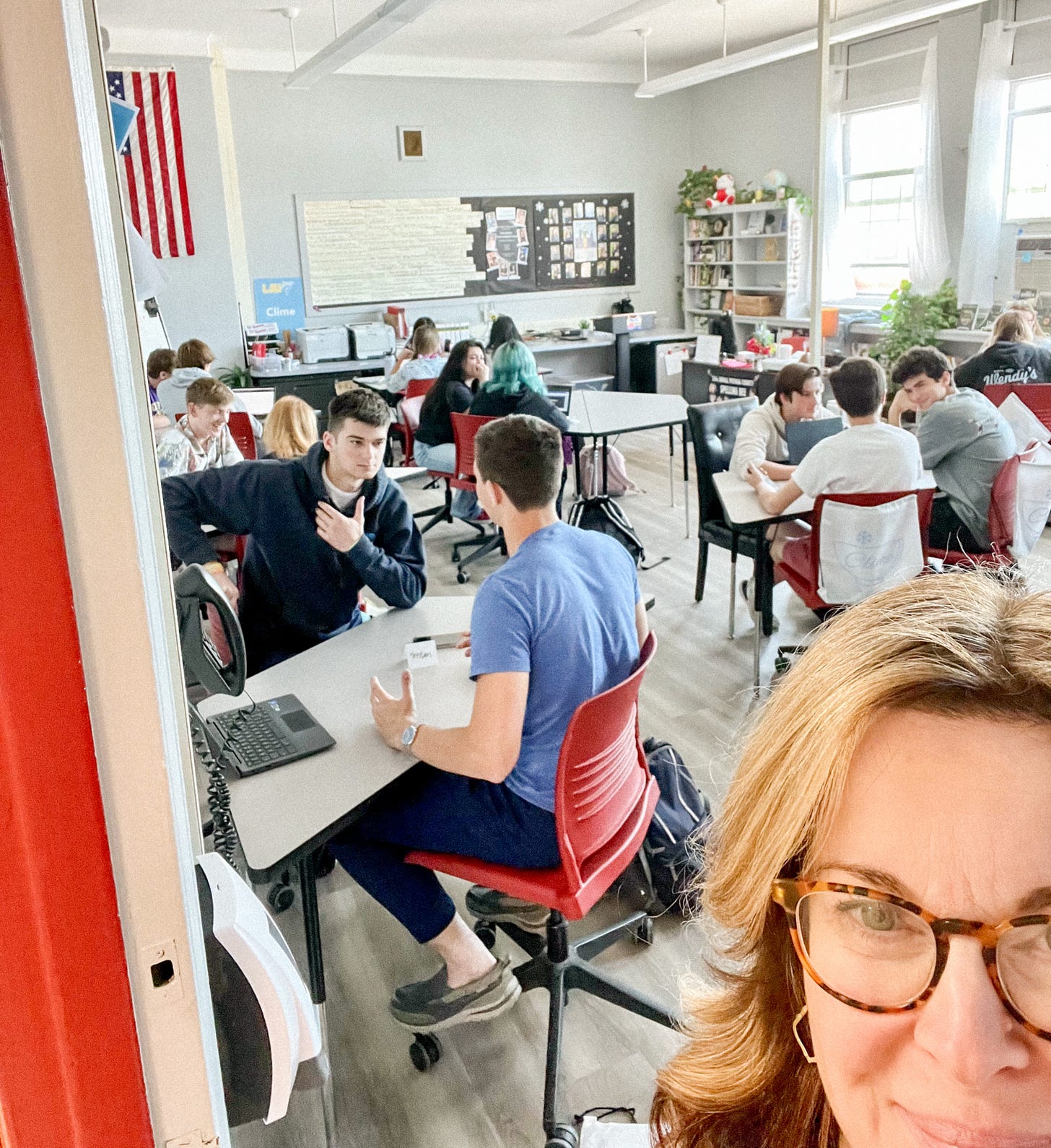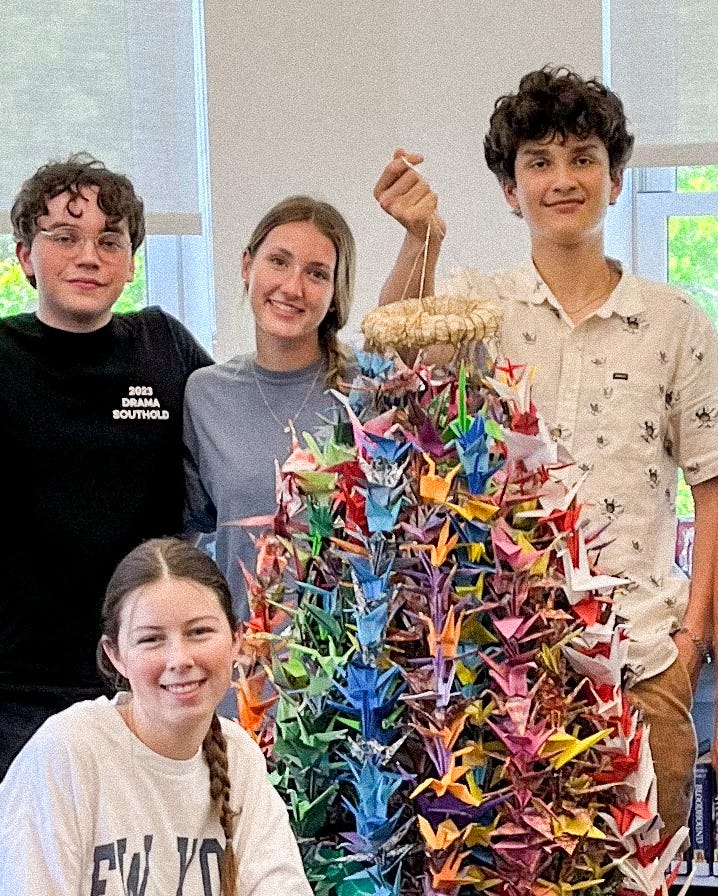How a high school teacher teaches her students to become responsible digital citizens
+social media will soon eclipse TV and the cultural moments | news that caught our attention this week
quick summary ⚡️
Whether you’re a teacher or you’re leading a team and looking to foster community, learn the tactics Jessica Ellwood employed to re-engage her students following the pandemic
Why marketers need to start preparing for a “post-TV future” and shift their attention to social platforms
The rise of “Girl” trends, GenZs are embracing being “a hater” and more in the cultural moments and news that caught our attention this week
Reminder that progress isn’t a one-size-fits-all process
it’s 2023 and I think I know what to teach my high schoolers now: speed “dating” and origami cranes
**Jessica Ellwood is a teacher with over 28 years of experience teaching English to grades 5-12. In addition to English, Jessica has experience teaching math, social studies, acting/improv, public speaking, AP Language, creative writing and Virtual Enterprise.**
I have taught English for 28 years, on both coasts, to students in grades 5-12, and to me it is the best job in the world.
When I started, my students did not have phones, laptops, email, or the internet. I taught with chalk. Kids wrote in notebooks, typed and printed on home computers if they had them, read books, and researched in the library, also with books.

And now? Now it is possible for students to complete the vast majority of their work using only their phones. Which is truly amazing. And there is this narrative out there that our main job as educators is to keep up with and utilize the latest technology – not only to deliver content – but to help students become responsible digital citizens.
For a while I agreed.
Don’t get me wrong – I LOVE tech tools for personal, professional, and educational purposes. And yet, after teaching high school English entirely online in 2020 and hybridity in 2021, this past year I needed to take a giant (but not total) screen break with my teaching. So I did.
The Screen Break
First, I cut back on Google Classroom, using it mainly as an assignment manager, rather than a teaching and assessment platform. I unearthed my tools of “yore”: sticky notes, index cards, loose leaf paper, writing utensils, novels, my trusty kitchen timer, and popsicle sticks with everyone’s names on them. We went online when we needed to, and the students seemed (unexpectedly) amenable to doing everything else by hand, which they hadn’t really done since 2020. Good, I thought. I’ll keep going.

The Kids Won’t Stop Talking
I also noticed a shift in how students spent their “work time” in class. In the past, students would gratefully spend 10-15 silent minutes completing assignments. Now? They wanted to talk. Not scroll on their phones, not fool around, but just sit and chat with each other (and sometimes me).
Despite initial misgivings, I realized that this chatting was important for two reasons: one, it helped balance the humanity-blunting aspect of their daily social media communication, and two, for almost two years they weren’t able to speak to anyone face to face without a screen or a mask in the way.
Speed Dating in the Classroom
I revamped our English class “adventures,” making sure that the students had daily opportunities to talk to each other as they learned. They practiced personal elevator pitches and interview question responses. The ENL students and native speakers reached across language and cultural barriers. They practiced asking genuine follow up questions, helping, teaching, and advocating for one another.
And, despite some eye-rolling, not only did they get better at thoughtful, quality chit-chat, they started to recognize the value of being truly heard. They began to see each other not just as classmates, but as peers they could learn from. They returned from college and job interviews, thankful for the practice and preparation (hurrah!).
1000 Paper Cranes
Buoyed by the positive response to the analog and talking activities, I told my brilliant librarian friend Mira that I’d help kickstart her school-wide effort to have students fold 1000 paper cranes. In class that day, after I shared Sadako Sasaki’s story of healing and community, my seniors (struggled and laughed and talked) folded their cranes. Each period, they dropped them off in the library, and I figured we were done.
The next day, several kids asked me if they could fold more cranes during class. After instruction, during their work time, I let them (their assignments still getting done at home!). Word spread. In study halls, they started teaching students in other grades how to fold them. In about four days, we had well over 1000 cranes, and Mira and I were both flabbergasted and delighted.
So what was going on?
My theory: As with other non-digital collaborative school experiences like theater, music, NJROTC, sports, robotics, and Virtual Enterprise (another favorite class I teach), students will happily talk, work, create, and learn new skills if you provide the time, materials, leadership, and space to help it happen. The crane project, with its analog, interpersonal attributes, was a similarly valuable experience that we’d created by happy accident.
I started to wonder – perhaps we as educators, regardless of grade or content area, could pivot once again and plan quality learning activities like these on purpose?
A New Narrative
That winter, amidst oft-heard laments like “COVID ruined everything” and “kids don’t want to work hard anymore” and “all they care about is going on their phones,” I was observing some different truths.
And I was starting to realize that my priority as an educator has nothing to do with technology at all.
My students – these brilliant, funny, curious, hard-working digital natives, these adaptable virtual and hybrid and in-person learners who already spend hours on their screens outside of school because that’s the world we live in – were craving the joys of learning through community and human interaction. Maybe we all are.
for more head to the MTD blog x connect with Jessica on LinkedIn
social media isn’t dying—it’s still growing📈
By 2025, social media users will equal TV viewers according to forecasting by Insider Intelligence.
And this hot take 👀🔥…
“Marketers clinging to TV should shift their attention to social. While time spent watching linear TV is still well ahead of time spent with social networks, TV time is falling, not growing. As marketers plan for a post-TV future, they must also continue to invest in advertising on social platforms to reach those audiences. Companies that cling to TV despite its challenges with measurement and targeting will be left behind.”
more from Insider Intelligence
💎cultural gems💎
The cultural moments and news that caught our attention this week:
“Girl” trends and the repackaging of womanhood. From “girl dinner,” “feral girls,” “lazy girl jobs,” and “hot girl walks,” the majority of this summer’s TikTok micro-trends involve the word “girl.”
GenZ is reclaiming what it means to be a hater. “Being a hater is ‘having something to say’, said Glenda Vanderkam, 24.”
Sorry, but LinkedIn is cool now. As other platforms start to lose their sparkle, LinkedIn is becoming a site where people want to hang out.
The fandomization of news. “A recent study found that influencers are overtaking journalists as the primary news source for young people, with audiences preferring to get their news from ‘personalities’ like celebrities and influencers rather than mainstream news outlets or journalists.”
X slows down access to some rival sites. According to NY Times analysis, X, formerly known as Twitter, slowed down user access to rival sites like Substack and Facebook.
inspo
Progress looks different for everyone.
Don’t get caught up in what it “should” look like.









